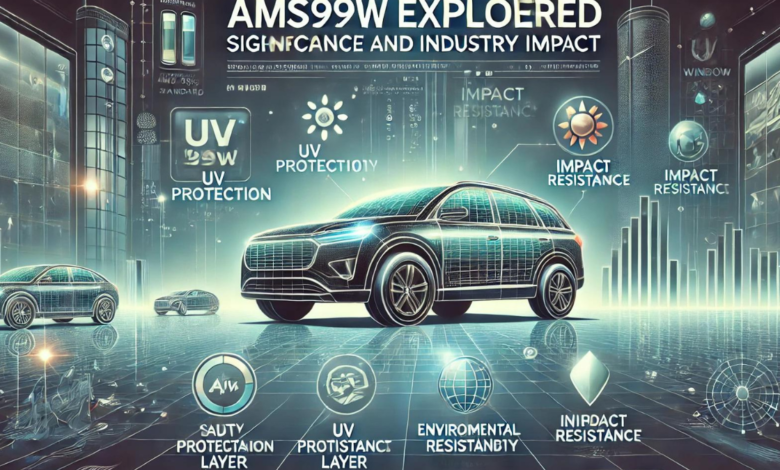AMS99W Meaning Explored: Significance and Industry Impact

Introduction
Maintaining a competitive edge in the automotive industry’s ams99w meaning-evolving landscape often hinges on adhering to stringent standards that guarantee safety and quality. The “ams99w meaning” standard represents a pivotal development in this sector, specifically targeting the specifications for automotive window materials. This article delves into the precise meaning of ams99w meaning, its implications for manufacturers, and its broader impact on industry practices.
What is AMS99W?
ams99w meaning is a standard developed by the Automotive Material Specifications Committee focused on the durability, safety, and environmental impact of materials used in car windows. It outlines criteria for UV resistance, impact resistance, and environmental degradation, ensuring that materials provide safety during collisions and maintain integrity over long periods and under various environmental stresses.
Historical Context and Development
The introduction of ams99w meaning came in response to a growing demand for higher safety and environmental standards. As consumers and regulatory bodies have pushed for safer and more durable vehicles, the industry has responded with AMS99W to set a clear benchmark for material quality. This standard was developed collaboratively by leading automotive manufacturers and material scientists, reflecting a comprehensive approach to industry-wide challenges.
Significance in the Industry
The AMS99W standard is particularly significant for its comprehensive safety and environmental sustainability coverage. By setting high thresholds for material performance, AMS99W helps manufacturers ensure that their products can withstand severe impacts and harsh weather conditions while minimizing their ecological footprint. This dual focus not only enhances product quality but also aligns with global trends towards sustainability.
Impact on Business Operations
For automotive companies, implementing AMS99W means revising their material procurement and testing procedures. Compliance requires investment in new technologies and materials that meet the standard’s stringent requirements. Although this involves initial costs, the long-term benefits include reduced liability from material failures and stronger market competitiveness due to the high quality and sustainability of the products.
Case Studies
Several manufacturers have already seen significant benefits from adopting AMS99W standards. For instance, a European car manufacturer reported a 40% reduction in customer complaints about window durability after switching to AMS99W-compliant materials. Another case involved an American company that enhanced its market share by marketing its compliance with AMS99W as a testament to its commitment to safety and sustainability.
Future Prospects
The AMS99W standard is set to evolve with advancements in material science and environmental studies. Future revisions may incorporate even stricter environmental performance standards or adapt to new technologies like smart windows that offer functionalities like dynamic tinting and electronic displays.
Conclusion
Understanding the AMS99W meaning is crucial for automotive industry stakeholders aiming to align with current and future market expectations. This standard sets a benchmark for material quality and reflects the industry’s commitment to innovation and environmental responsibility.
FAQs
- What does AMS99W specifically refer to?
- AMS99W refers to specifications for automotive window materials focusing on safety, durability, and environmental sustainability.
- How does AMS99W influence product development in the automotive sector?
- AMS99W guides manufacturers in selecting and testing materials that meet high safety and environmental care standards, influencing design and production decisions.
- What are the benefits of complying with the AMS99W standard?
- Compliance enhances product safety and customer satisfaction, reduces environmental impact, and aligns with global regulatory trends.
- Are there any challenges associated with AMS99W compliance?
- The primary challenges include increased production costs and the need for technological investments to meet the standard’s criteria.
- How is AMS99W expected to evolve in the future?
- As material technologies advance and environmental regulations become stricter, AMS99W will likely be updated to incorporate these new standards and technologies.
You May Also Read: https://trendbrizz.com/get-in-touch-on-turbogeek-org/




